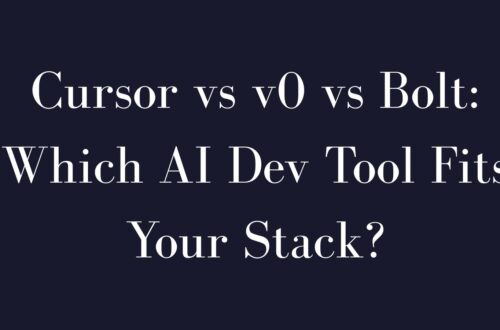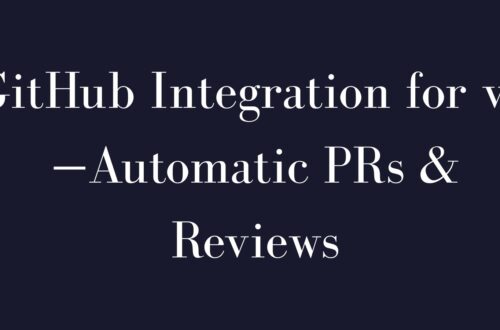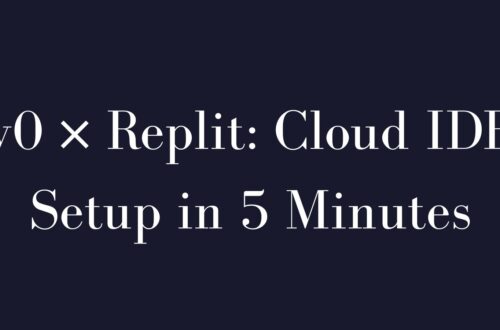In this hands-on build challenge, we’ll put Bolt.new and Vercel v0 head-to-head to evaluate their strengths and weaknesses for full-stack development. We’ll compare build speed, code quality, total costs, and real-world usability to find out whether Bolt or v0 offers a better development experience in 2025.
Test Project Outline
Our representative project is a simple To-Do app built with the following stack:
Frontend:
- Framework: Next.js v15.3
- Library: React
- Styling: Tailwind CSS
- UI Components: shadcn/ui
- Core UI Elements:
- Task input form
- Task list display
- Task completion toggle
- Task deletion button
- User login/signup interfaces
Backend:
- Runtime: Node.js (Next.js API Routes)
- Database/Auth: Supabase (PostgreSQL & Supabase Auth)
- Optional: Google OAuth login
Core functionalities include user registration, login, and full CRUD for tasks.
Tool Capabilities Recap (April 2025)
Bolt.new
Bolt is an AI-first, browser-based IDE capable of full-stack app development, leveraging StackBlitz’s WebContainers. It aims to scaffold complete applications (frontend, backend, and databases) from natural-language prompts.
Key features include:
- Full-stack scaffolding and code generation
- Automated npm package management
- Real-time error detection & debugging
- Integrated deployment via Netlify
- Integration support for Supabase and other databases
However, backend reliability remains inconsistent (source: community reports).
Vercel v0
Vercel v0 specializes in frontend development, specifically generating React components styled with Tailwind CSS and shadcn/ui. It excels at rapidly prototyping UI but does not generate backend logic.
Key features include:
- Prompt/Image/Figma-to-React UI generation
- Iterative conversational refinements
- Deployment tightly integrated with Vercel
- No backend/database/authentication generation
Developers typically integrate v0-generated UI into their own backend workflows.
Build Speed Comparison
Vercel v0 Build Speed
- Generates individual UI components in ~30 seconds per iteration (source: user reports).
- Typically requires multiple iterations for polished UI, totaling 5–15 minutes.
Bolt.new Build Speed
- Can scaffold full-stack app structure (frontend/backend/database) in 1–5 minutes (source: early user experiences).
- Backend reliability issues often increase total development time significantly, potentially hours or days.
Direct Speed Comparison
- Vercel v0 is faster at targeted frontend tasks, ideal for rapid UI prototyping.
- Bolt.new initially faster at scaffolding full-stack but slows down considerably due to backend debugging.
Code Quality Analysis
UI Code Quality
- Vercel v0: Consistently high-quality UI code leveraging React/Tailwind/shadcn best practices. Occasionally requires minor adjustments (source: community feedback).
- Bolt.new: Variable quality—initially decent but prone to duplication and style inconsistencies. Often requires manual cleanup (source: user experiences).
Backend Code Quality (Bolt Only)
Bolt’s backend code suffers reliability problems, including:
- Poor data handling and migrations
- Persistent authentication errors with Supabase
- Security and state management concerns
- Significant debugging overhead, often described as costly and frustrating (source: multiple user reports).
Total Cost Estimation (Simulated)
| Tool | Pricing Model | Estimated Usage | Recommended Cost Tier |
|---|---|---|---|
| Vercel v0 | Credit-based generation | ~160–300 credits (Frontend Only) | Free–Premium ($20/mo) |
| Bolt.new | Token-based usage | 5.5M–34.5M+ tokens (Full Stack) | Pro 50 ($50/mo)–Pro 100+ ($100+/mo) |
Bolt.new costs can escalate unpredictably due to backend debugging requirements, making budgeting challenging. Vercel v0 pricing remains predictable due to frontend-only scope.
Community Build Experiences Synthesis
Developer Sentiment
- Vercel v0: Praised for speed, UI quality, and frontend prototyping capabilities. Limitations include lack of backend generation and syncing challenges with local projects (source: user forums).
- Bolt.new: Initially impressive due to full-stack scaffolding, but backend reliability significantly undermines the experience, resulting in developer frustration and unpredictable costs (source: developer feedback).
Workflow Differences
- Vercel v0 Workflow: Generate UI in v0 → Export to local IDE (e.g., Cursor) → Manually implement backend logic and integrations.
- Bolt.new Workflow: Attempt full-stack in-browser → Frequent debugging → Often resort to manual interventions or external IDEs.
Conclusion and Nuanced Verdict
The comparison highlights a fundamental trade-off:
- Vercel v0: Superior for UI-focused tasks. Predictable, reliable frontend generation with manual backend integration.
- Bolt.new: Ambitious full-stack generation but hampered by severe backend reliability issues and unpredictable costs.
For building a reliable full-stack To-Do app with Supabase in 2025, Vercel v0 combined with manual backend implementation is recommended. Bolt may suit ultra-rapid, backend-light prototypes but is high-risk for production-ready full-stack apps.
FAQs
Can Vercel v0 generate backend code?
No. v0 only generates frontend UI components. Backend logic must be manually created and integrated.
Is Bolt.new good for production-ready apps?
Currently not recommended due to significant backend reliability issues and costly debugging overhead (source: Reddit community).
What’s the primary difference between Bolt and v0?
Bolt attempts full-stack AI-driven development, whereas v0 focuses strictly on generating high-quality React/Tailwind/shadcn UI components.





